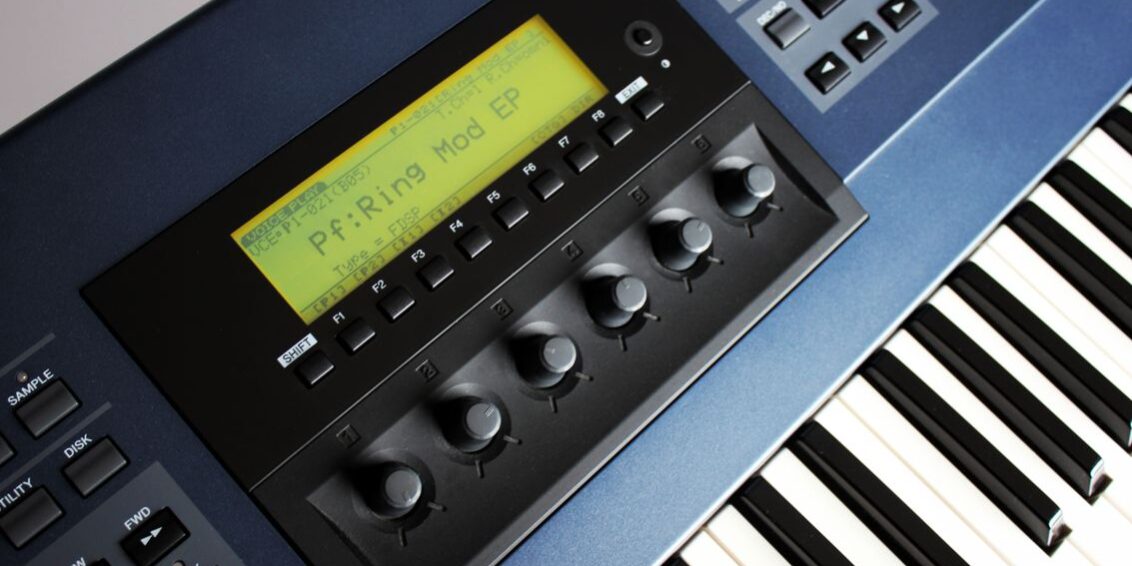WOLF retro DESIGN REVIEW. 5th March 2023
A retro review looks at products that are at least over ten years old from a present-day WOLF design perspective. While the technology and fashion of the period influence design, and are taken into consideration, great design ideas will transcend their eras to be timeless.
Interesting and factual information may be provided, but our review aims to deliver insight from the perspective of a designer’s mind and eyes.
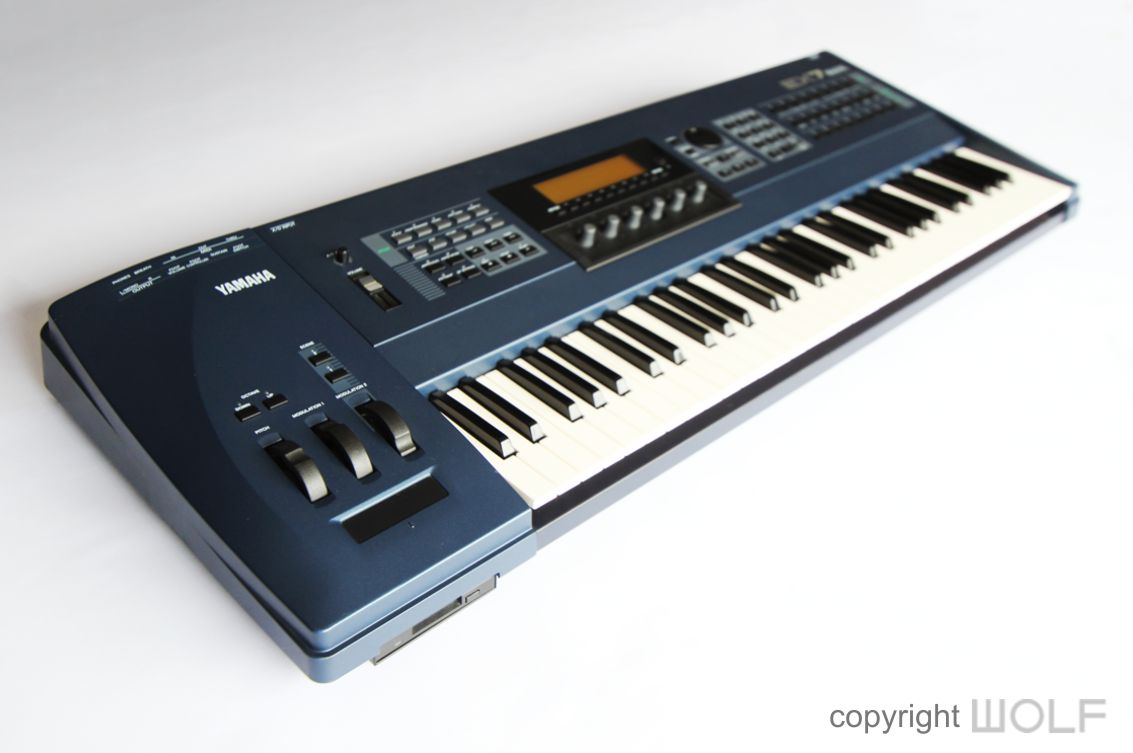
The not so little smaller EX.
Introduction
Product Focus
As with most reviews the focus is on the design and its evolution with the synthesizer. The functioning systems and sound quality are not necessarily not considered.
Product description
The EX7 was released alongside the EX5 in 1998. At that time, it featured more than any other Yamaha synth that came before by combining multiple tone generators together with sampling capabilities. While none of that was particularly new in technology, the combination of many things made it a very powerful workstation and still in use today.
Price and Availability.
Although it was more affordable than its 76-key big brother, it was less popular and sold in fewer numbers. This is reflected on the second hand market with only one EX7 for every EX5 for sale. Despite being rarer than the EX5 they are worth only half the value. Expect to pay between $350 and $500 depending on condition. A mint example with optional accessories like expansion and original hard case could be worth several hundred dollars.
Additional information
The EX7 was not just an EX5 with one less octave. From our research it also had fewer capabilities with sound, so it is important to research as buyers often imagine it’s cheaper because it’s just a shorter EX5.
In celebration of the new Millennium, Yamaha released a special silver coloured synth in the year 2000. Known as the EX5S it was limited to only 500 units.
Review
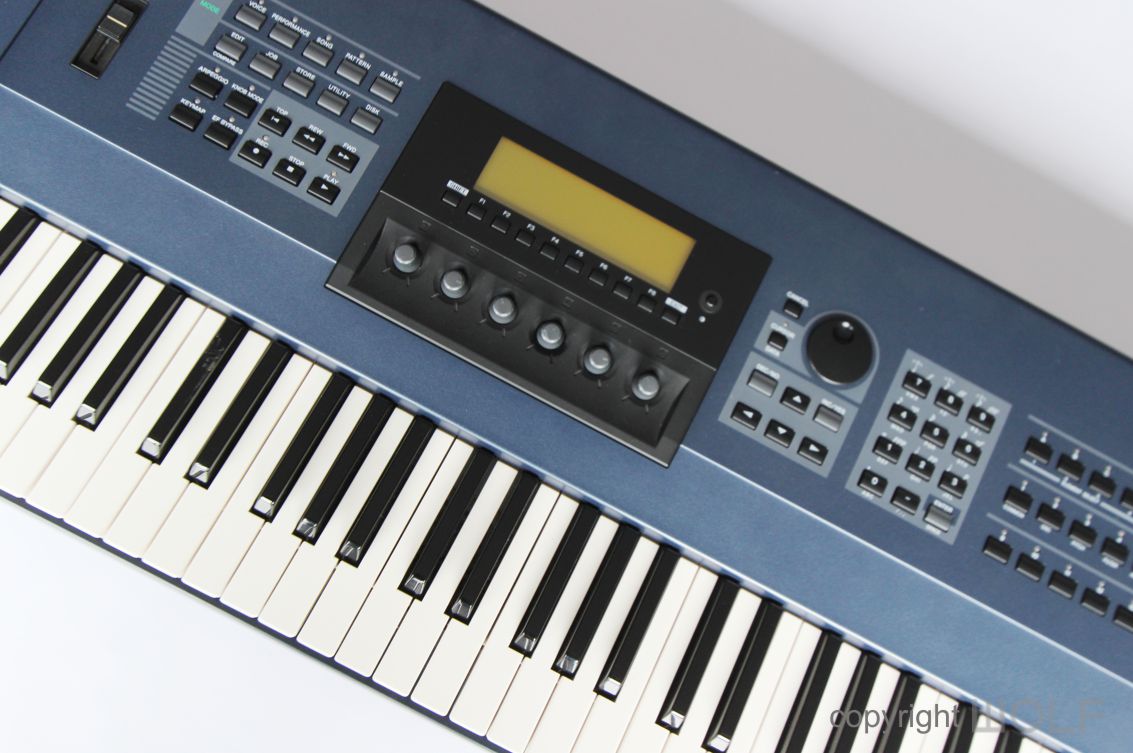
First impression/ Delight
If you’re familiar with the EX5, then the EX7 presents as a stumpier version of the EX5. Other than being shorter they are visually near identical. When we first reviewed the EX5 we noted that there is nothing particularly out of place or that stands out. Everything looks very familiar in terms of controls and layouts. Three years on from that review we find the colour to be rather unique and almost retro given that Yamaha have not used a colour like it since.


Exterior Design Review
Yamaha’s first blue synthesizer arrived in 1996 as the CS1X and then in 1997 they chose blue again in their AN1X. The EX5 & EX7 were thus the 3rd and last usage of blue known to date. The blue in the EX series however is slightly darker, more metallic and with a slight sheen.
The EX synths introduced new knob controllers under the LCD screen and a ribbon controller under the 3 controller wheels on the right side. These subtly suggest that there is more available than ever before and invites you to explore.
Overall, it feels like an evolution of the SY77 but the symmetry of left and right end panels was interrupted for the first time. The corner details are all identical but Yamaha introduced a subtle but big “swoosh” shape on the left end. It was almost as if they realised that this synth was going to be rather thick and chunky and so needed a way to soften the bulkiness. Whether or not it actually slenderizes the machine is debatable, but the EX synths would have little character without them. We note that the swoosh could also be a way to support the musicians left hand when not in use.
Yamaha also brought back the bevel shape between the front panel and the keyboard section as done on both the DX7 mkII and all the SY synths (except the SY85). The bevel on the EX synths however is significantly larger than ever before.
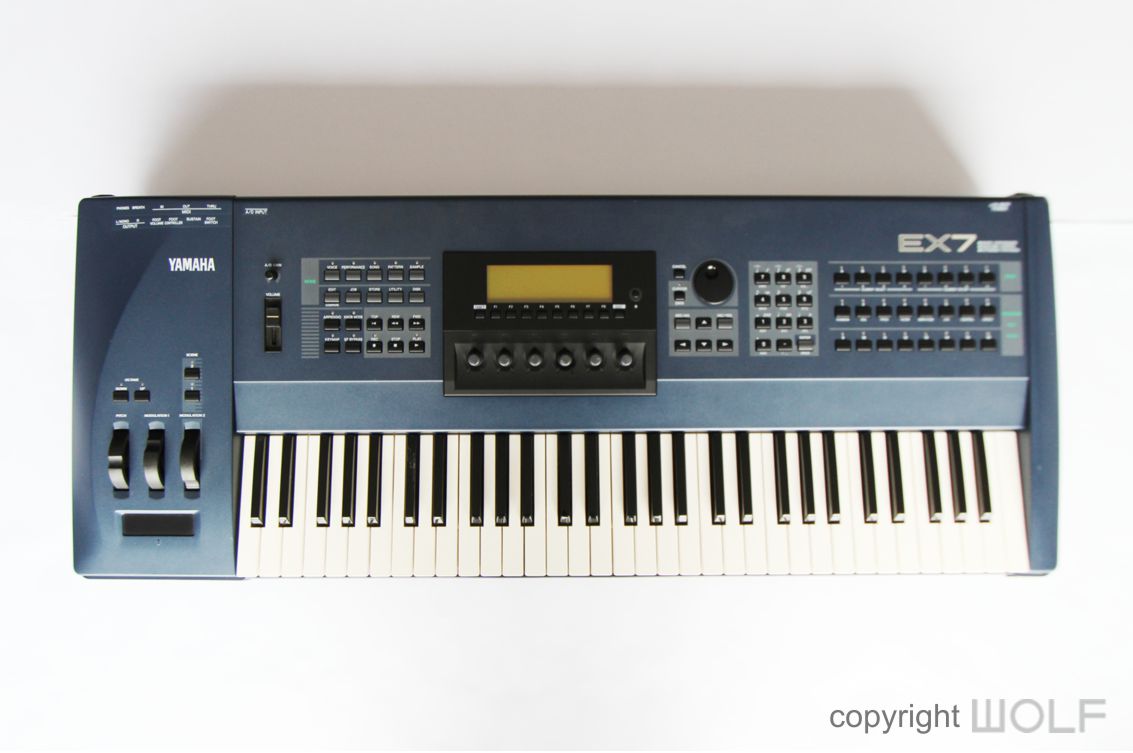
Curved ends help to soften what is a relatively bulky instrument.
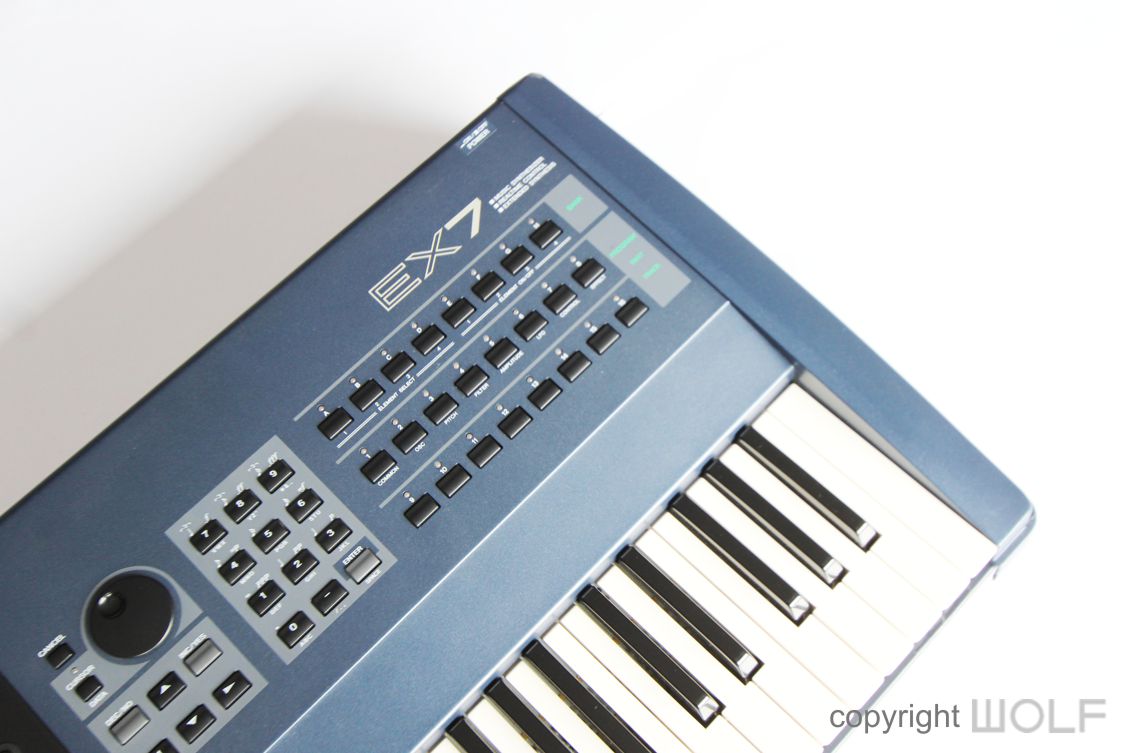
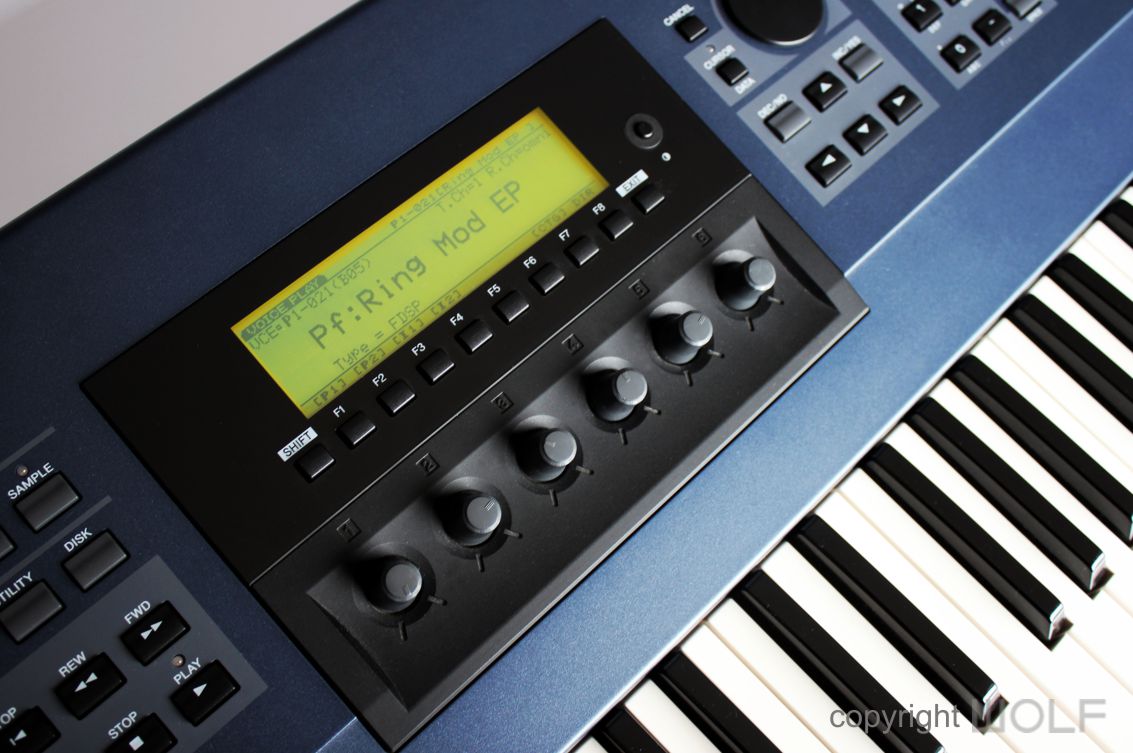
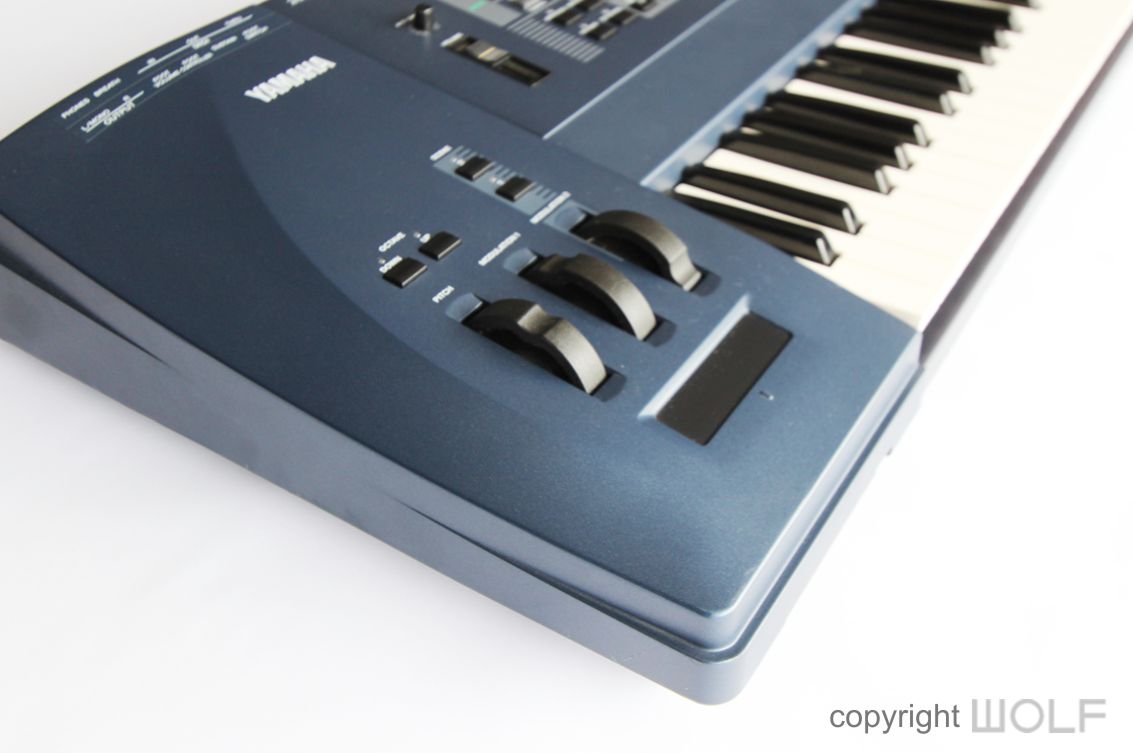

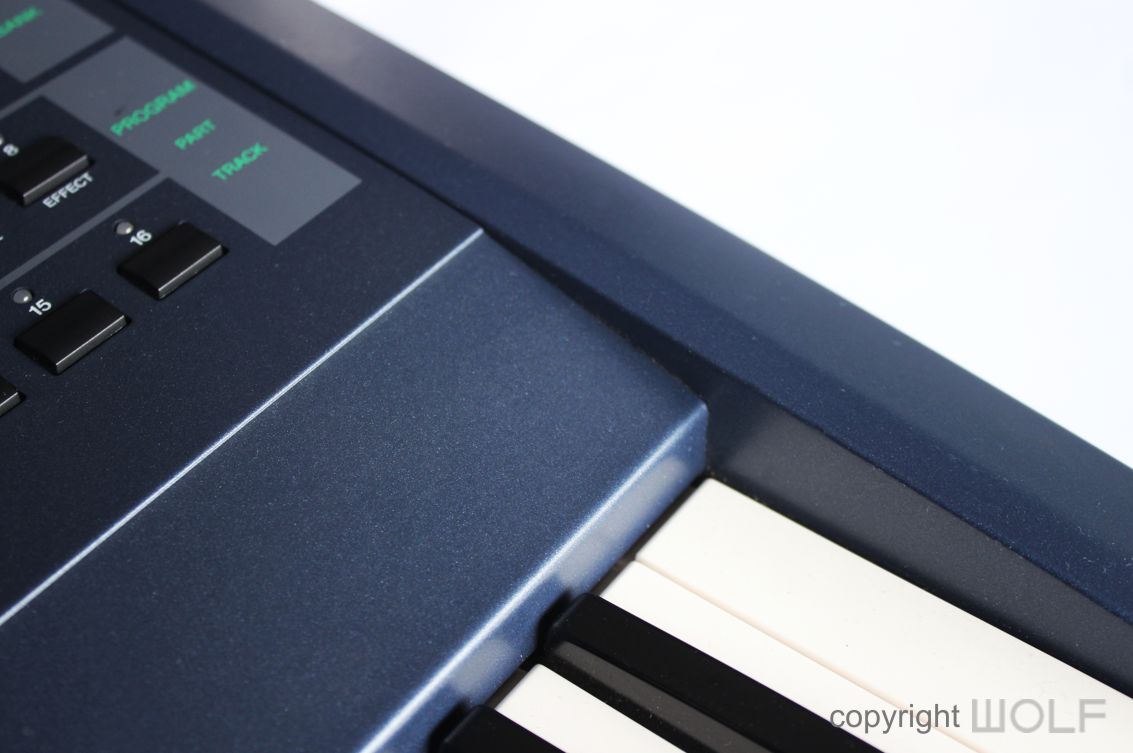

Craftsmanship.
The EX7 maintains the same large smooth and flat expanses of metal as with both the SY and W series synths. However, the EX7 does somehow feel stronger in build as if the metal and plastic is thicker. We think this is an illusion created by the thickness of the machine and the stepped layering seen on each corner.
While the screen has not increased in size to be more competitive with KORG and Roland it does seem brighter and clearer with a yellow colour that is reminiscent of the DX7 MkII. All the controllers feel excellent and affirm quality.


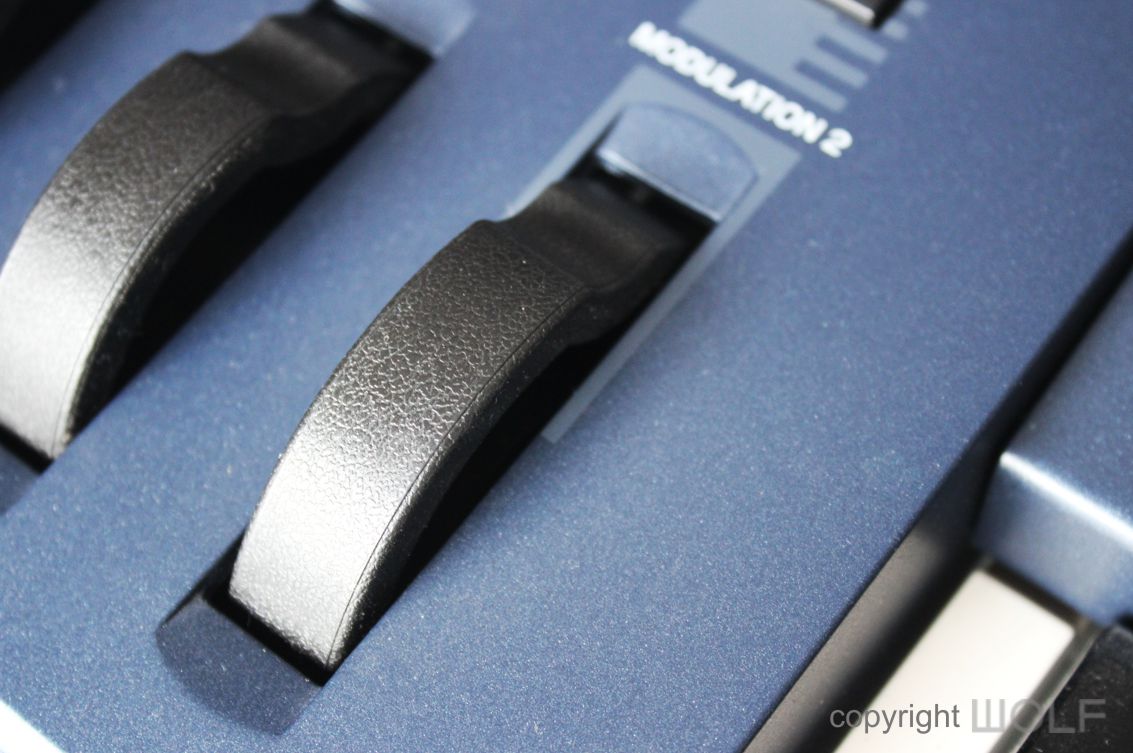
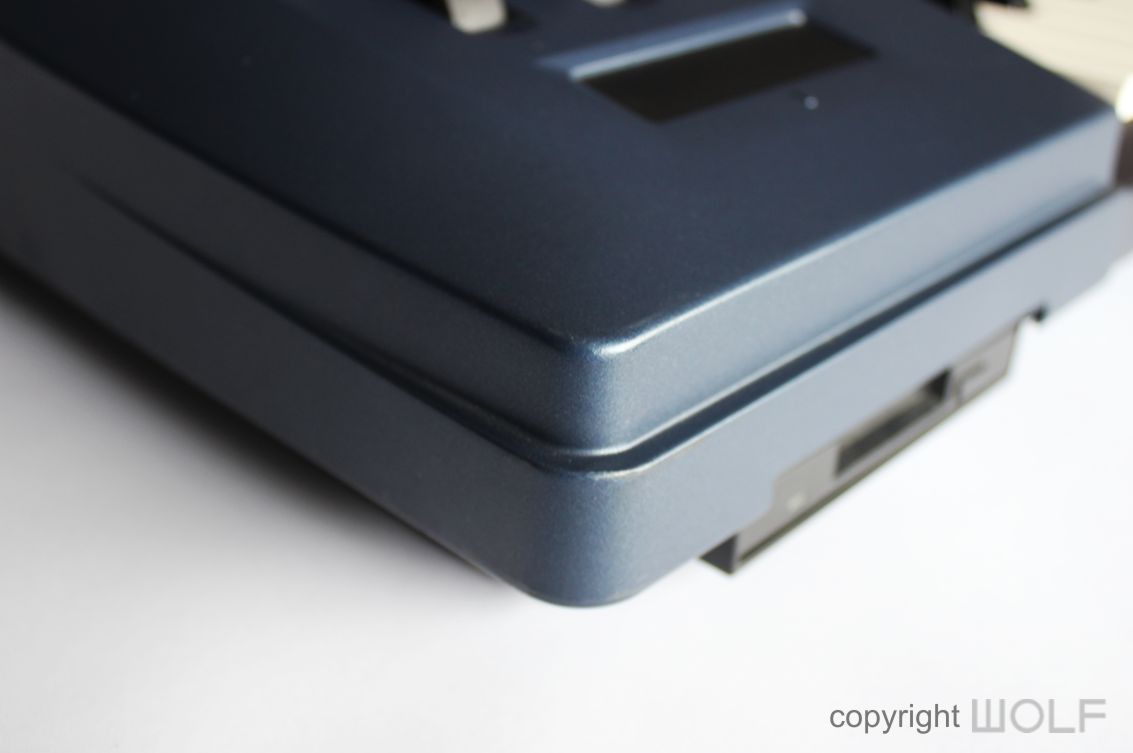
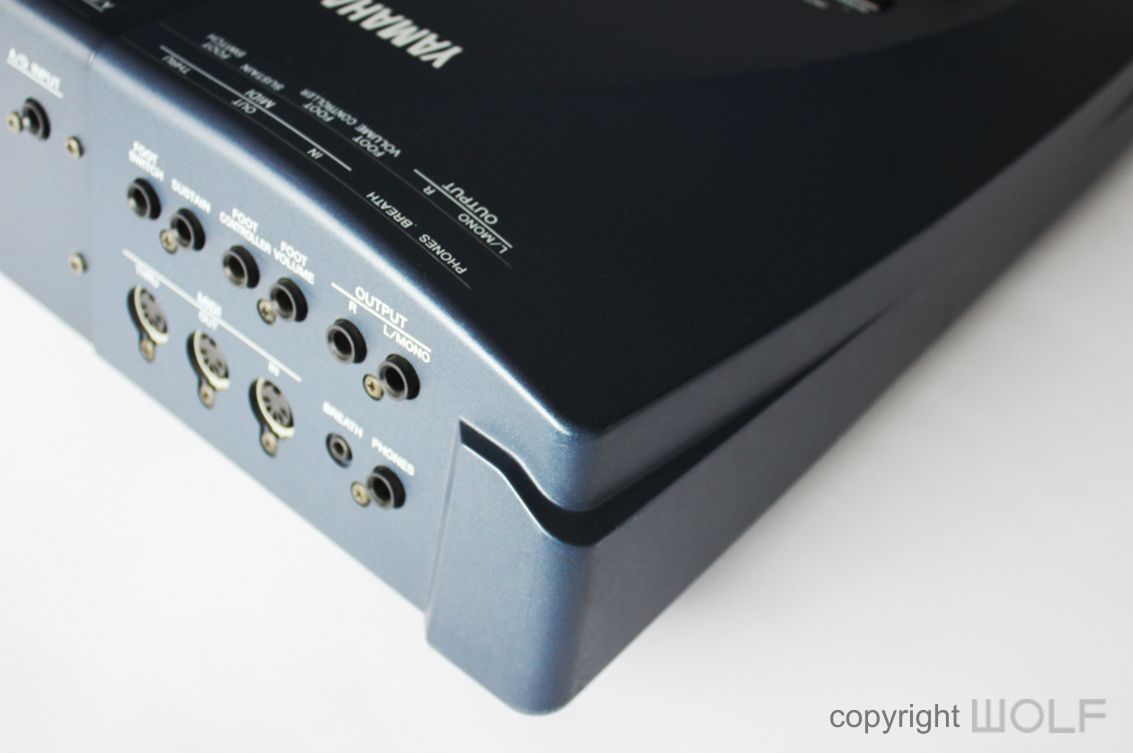
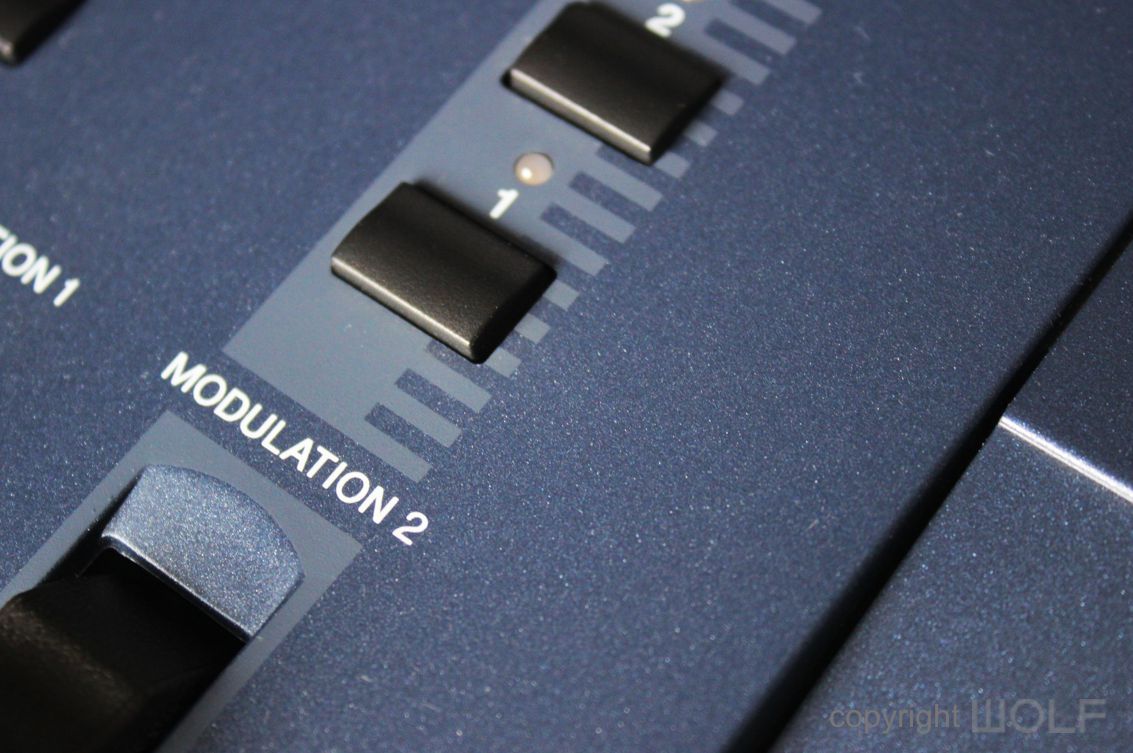
FUNCTION- Experience.
The EX7 feels great because it was well built with an air of confidence all around. All buttons feel nice to press and when we studied them closely, they appear to be sized like those on the SY99 with texture from the W5 and a wavy shape added on top. The alpha dial is minimalistic and sits with just a slight protrusion from the surface. While we think it could be larger the screen is nice and we were glad that Yamaha finally decided to make those tiny “F” buttons immediately below the screen a little less tiny than those on previous generations.
Yamaha introduced round controller knobs with their CS series and they carried these over on the EX synths. They were designed to feel both smooth and weighty.
At 15kg the EX7 was not light and those bulky ends are not easy to hold or grip for mobility.

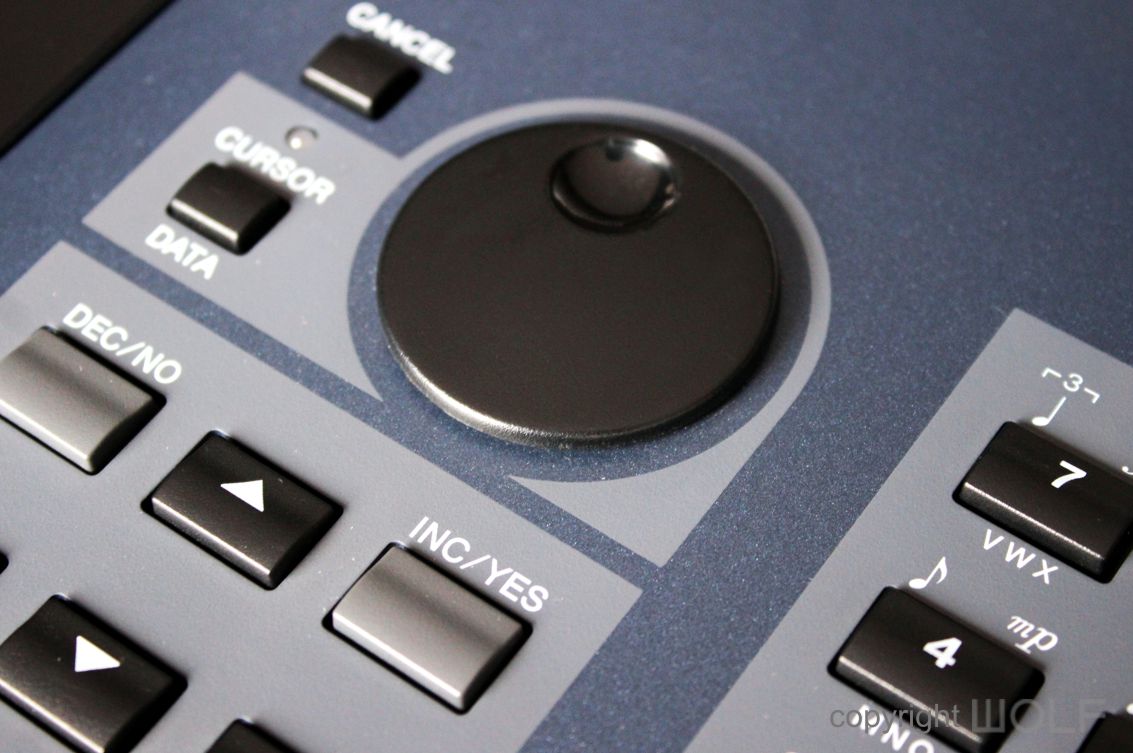

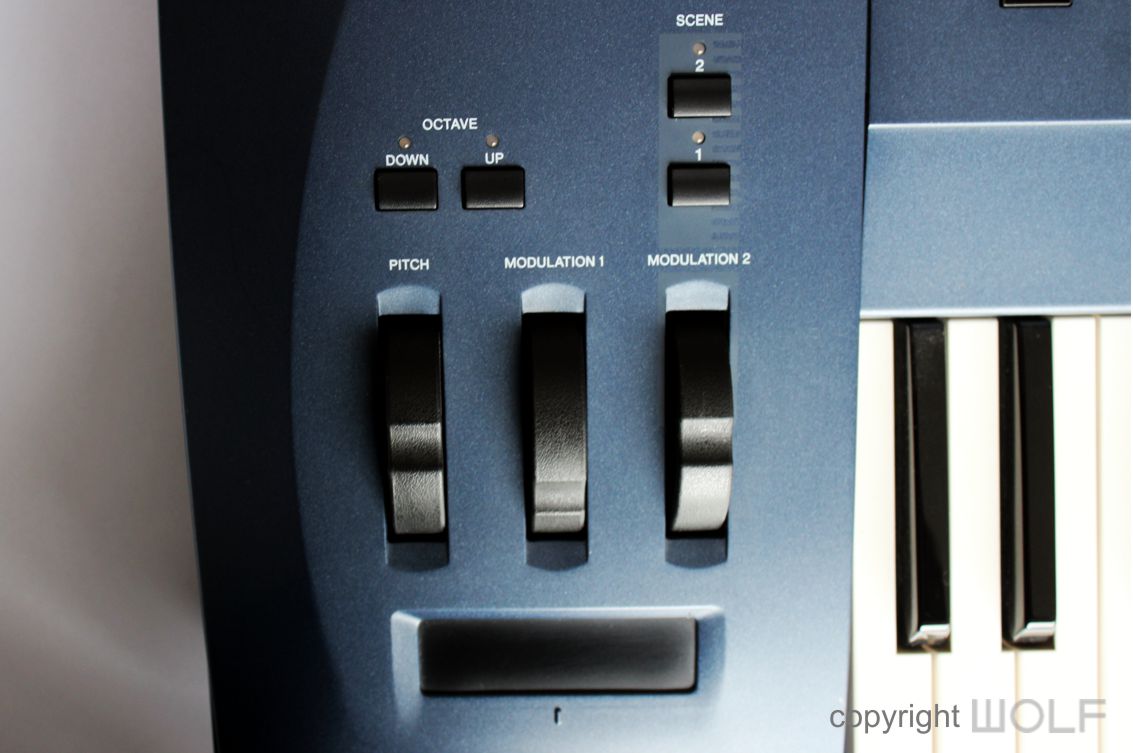
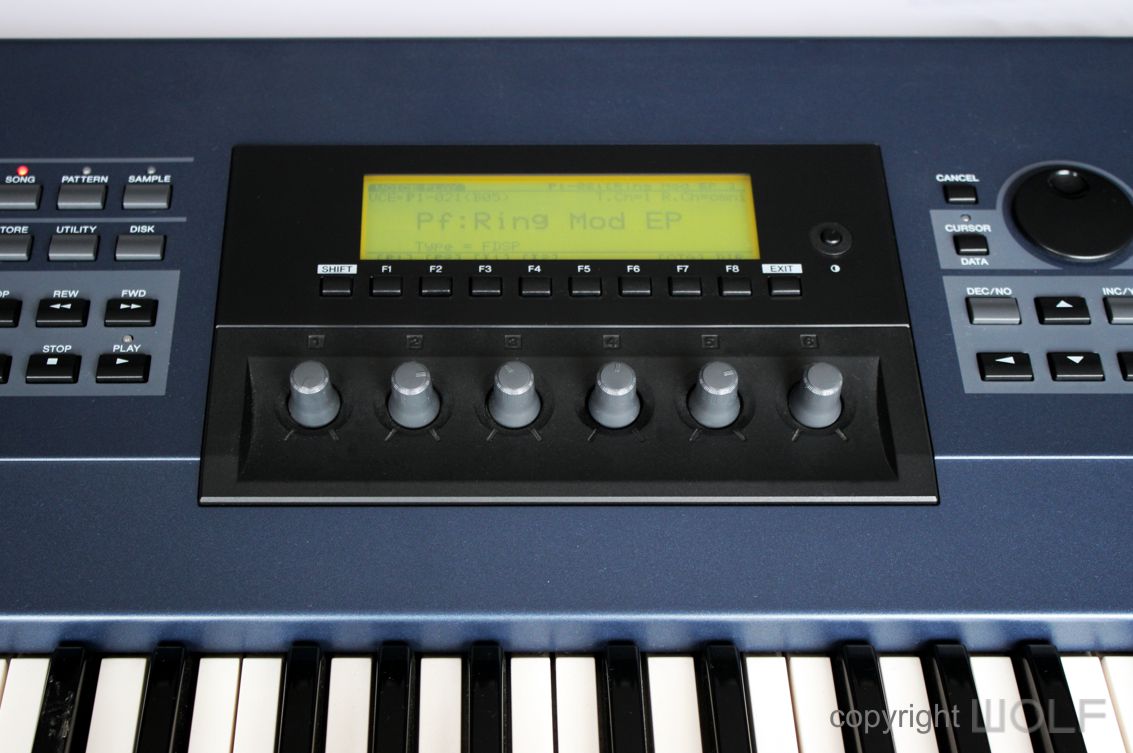
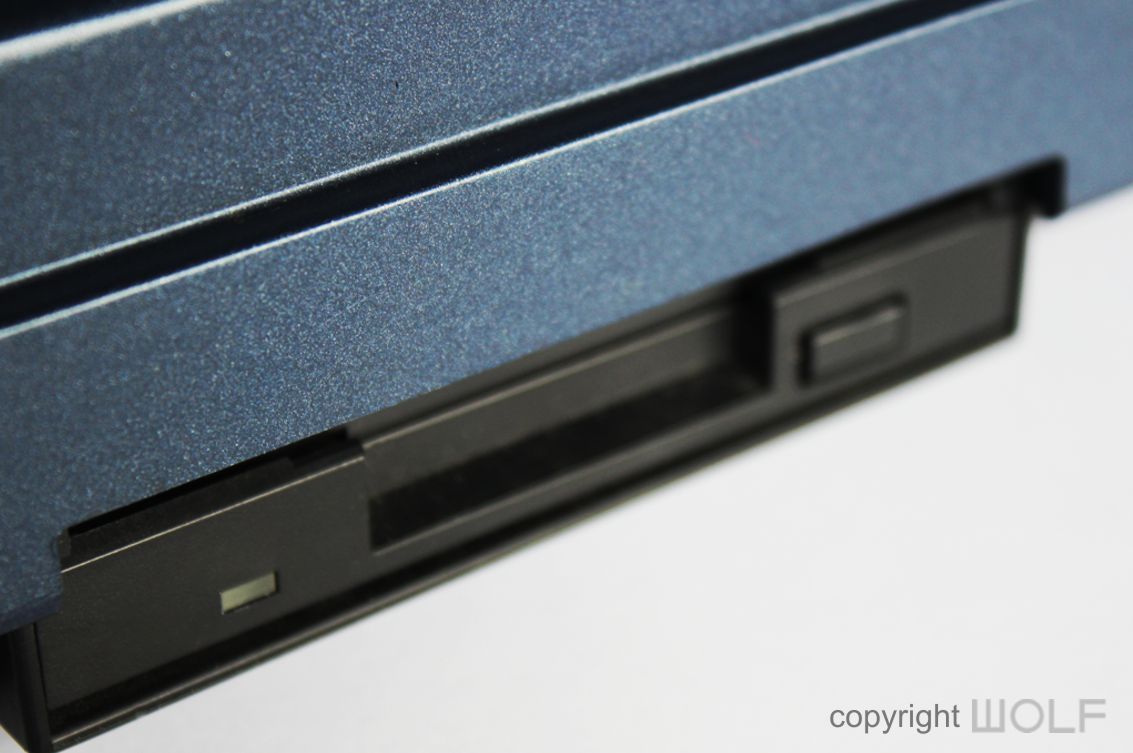
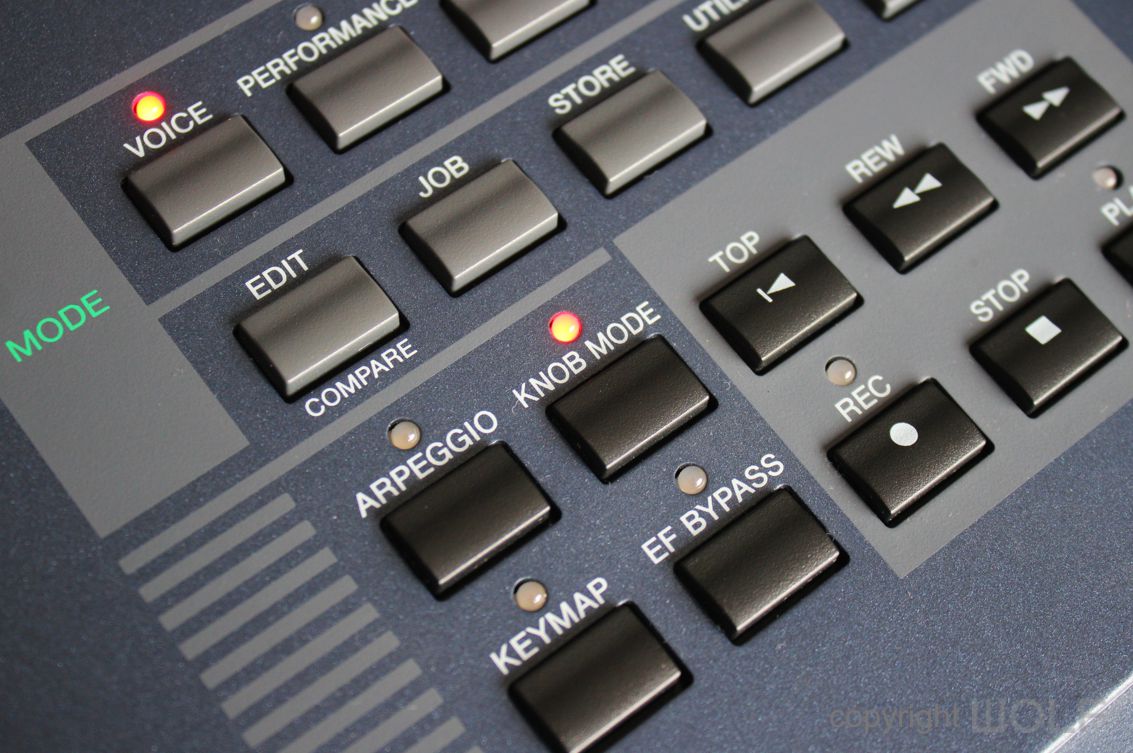
Desirability / Collectability
Many EX7 owners still find use for their solid blue beasts because they are still very powerful. While not as desired as the EX5 or as rare as the silver Millennium editions, they are still excellent sounding synthesizers. The original hard case is rare and hard to find, so seriously consider one to accompany your EX7 if you ever find one for sale.

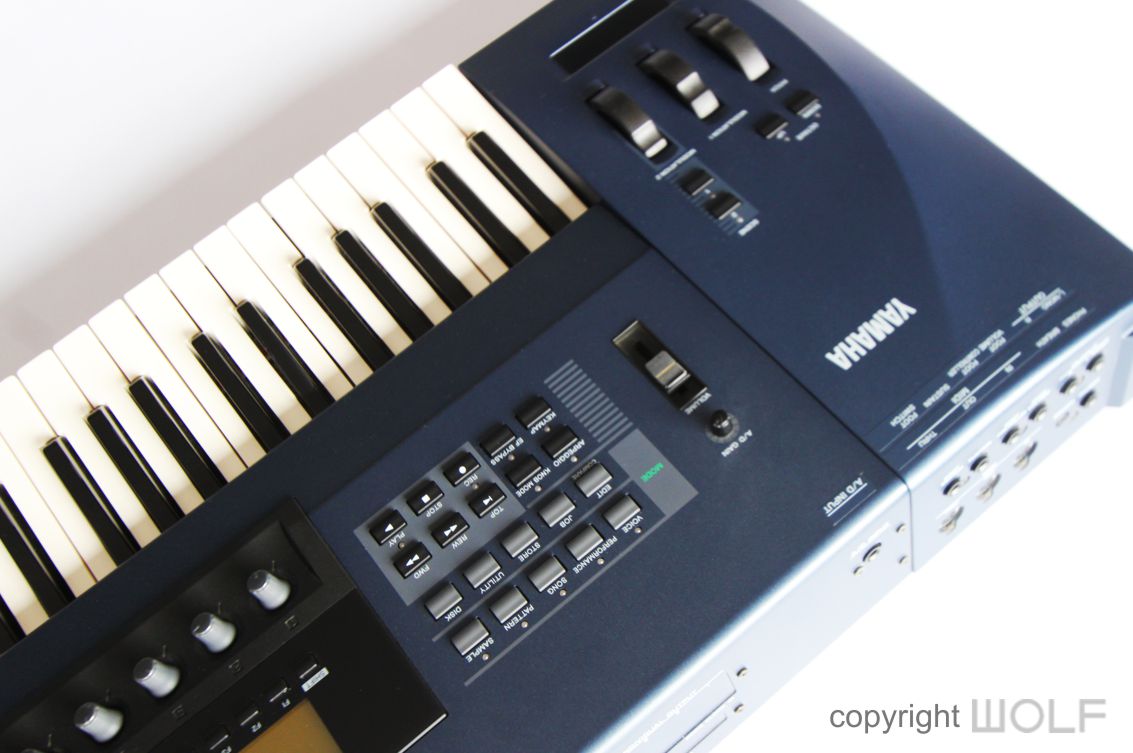



WORD OF THE WOLF
The EX7 will always live in the shadows of the EX5. Even proportionately it is not as elegant in our opinion. We would only consider owning one if you find a mint one for a bargain with lots of original accessories.
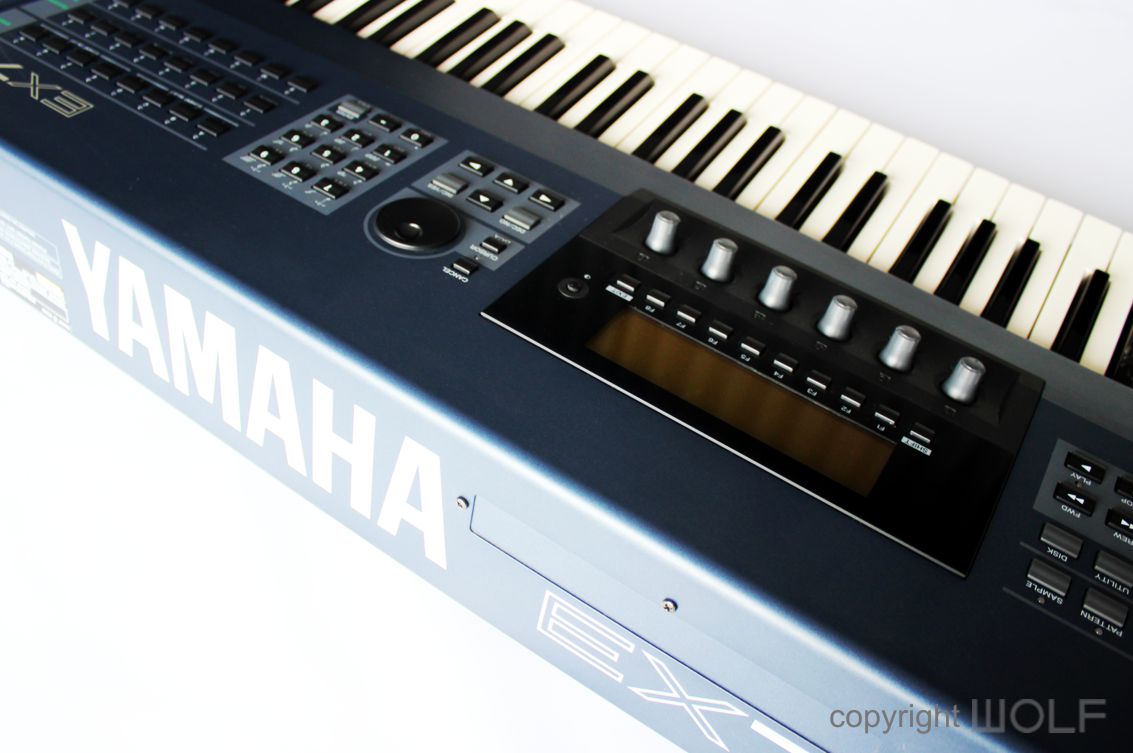
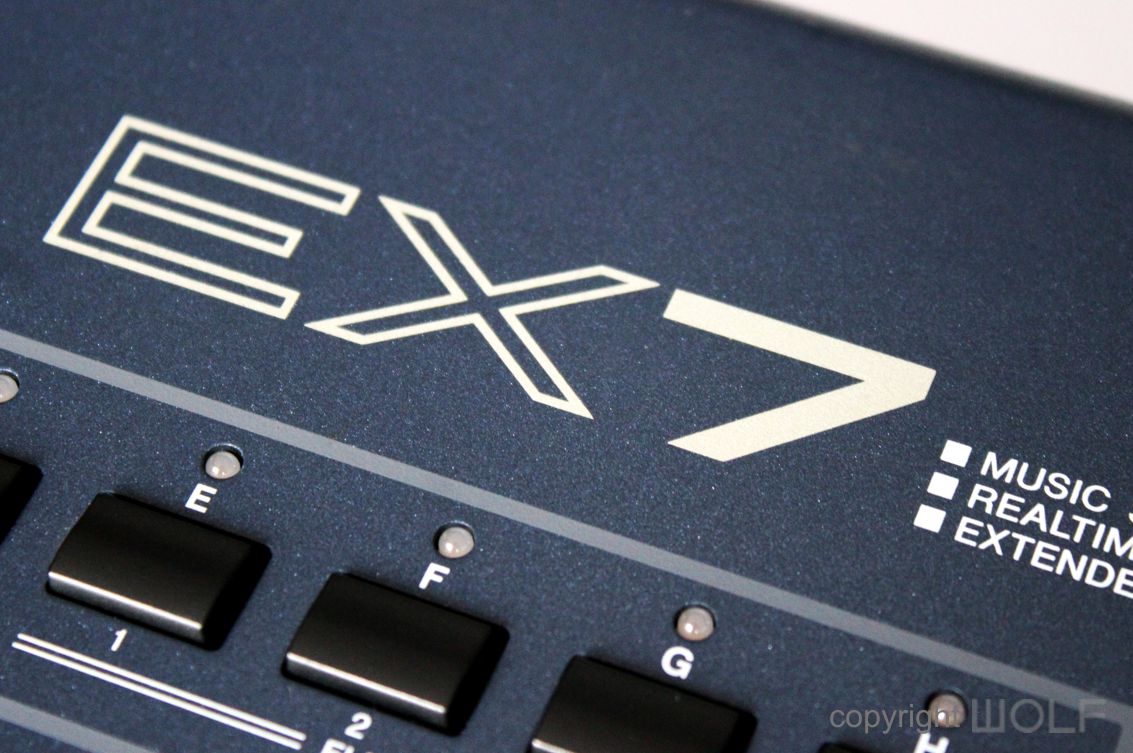
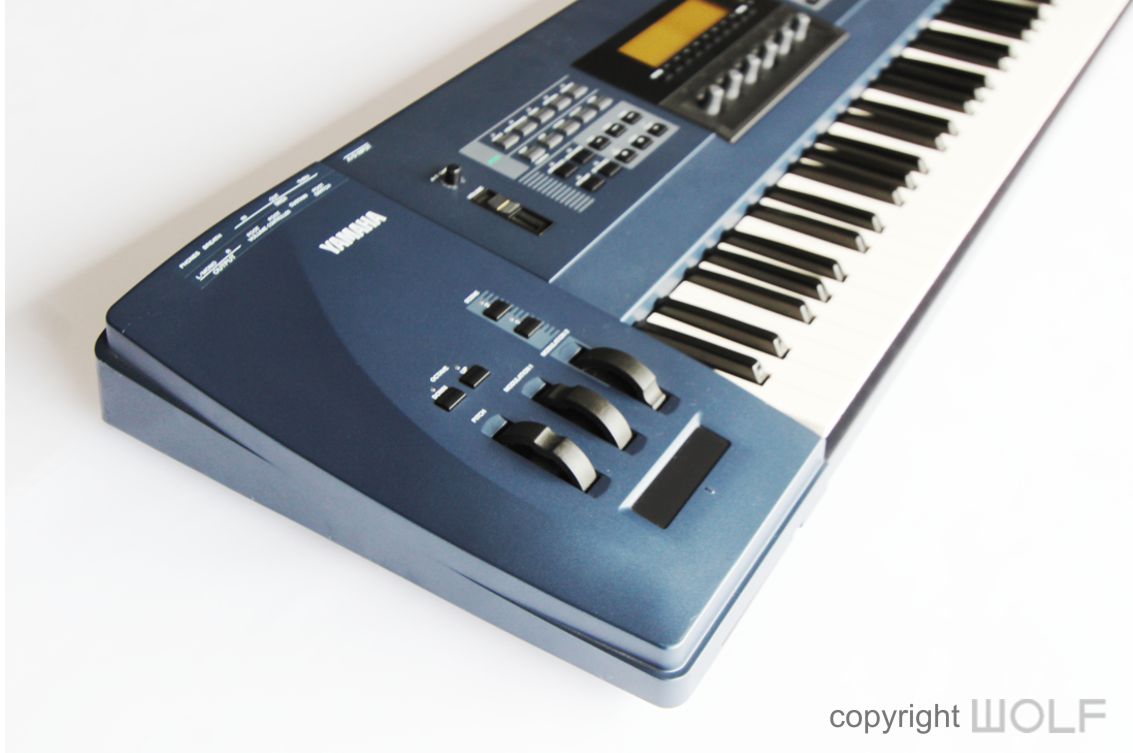

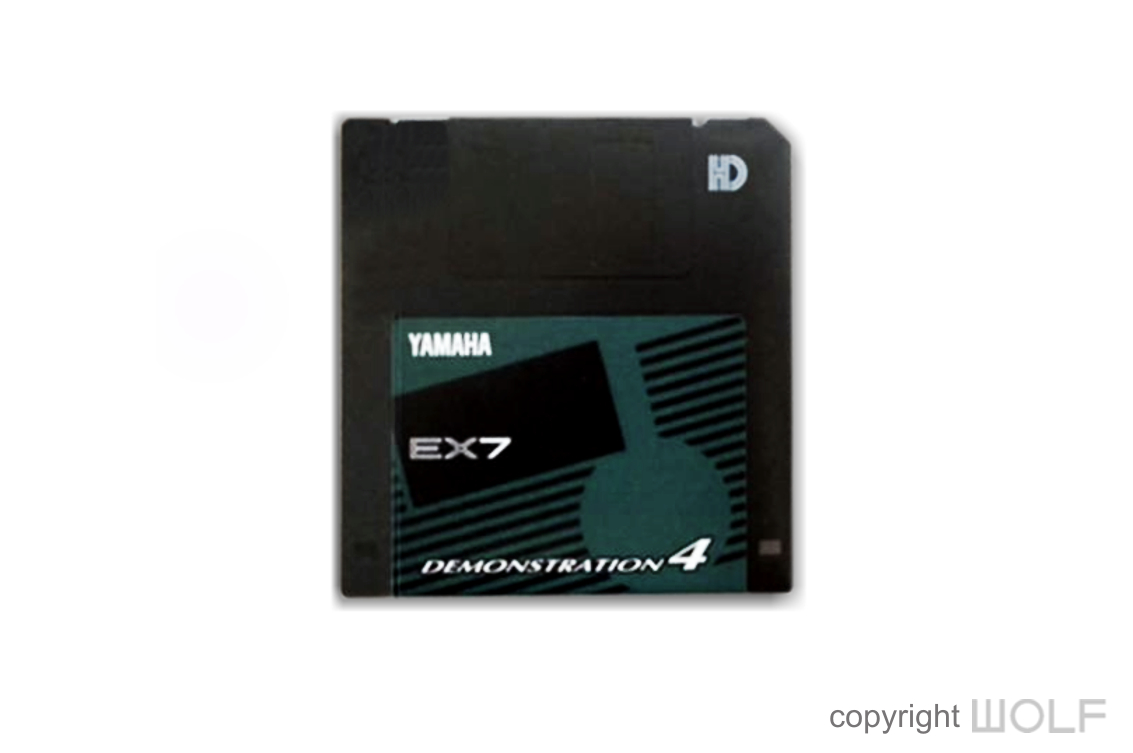
The demo disks have similar graphic to the EX5 demo disks but with green colour instead.

Factory Instruction Manuals
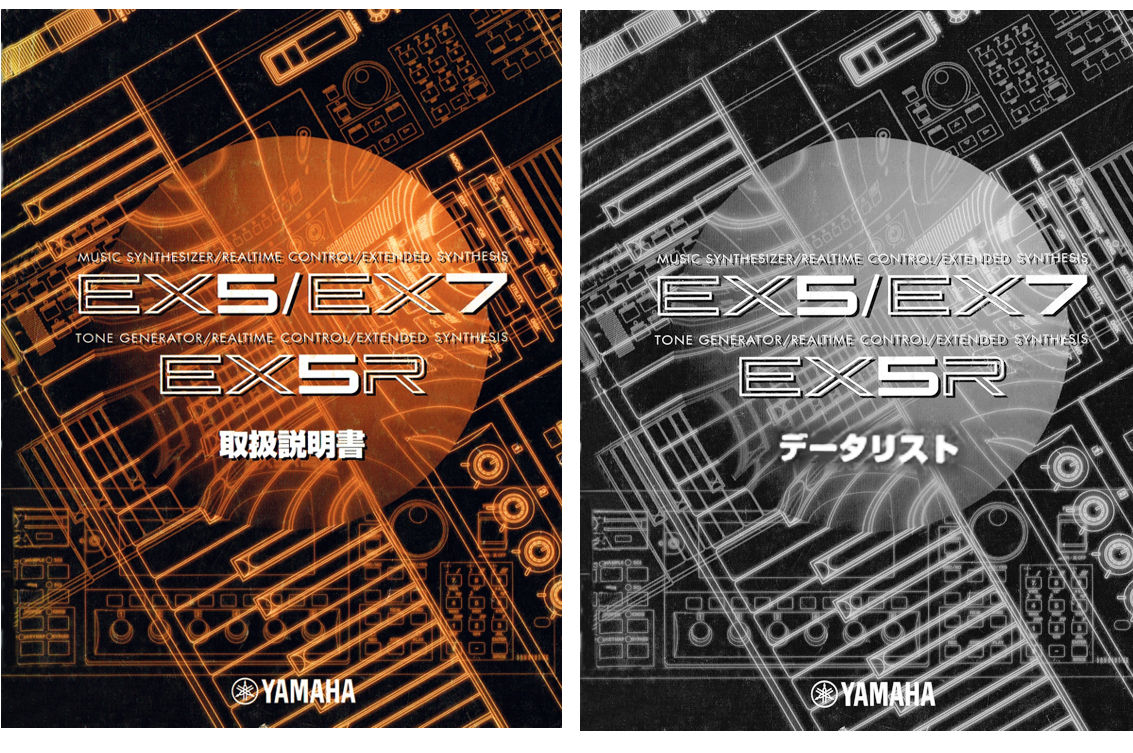
Japanese manuals
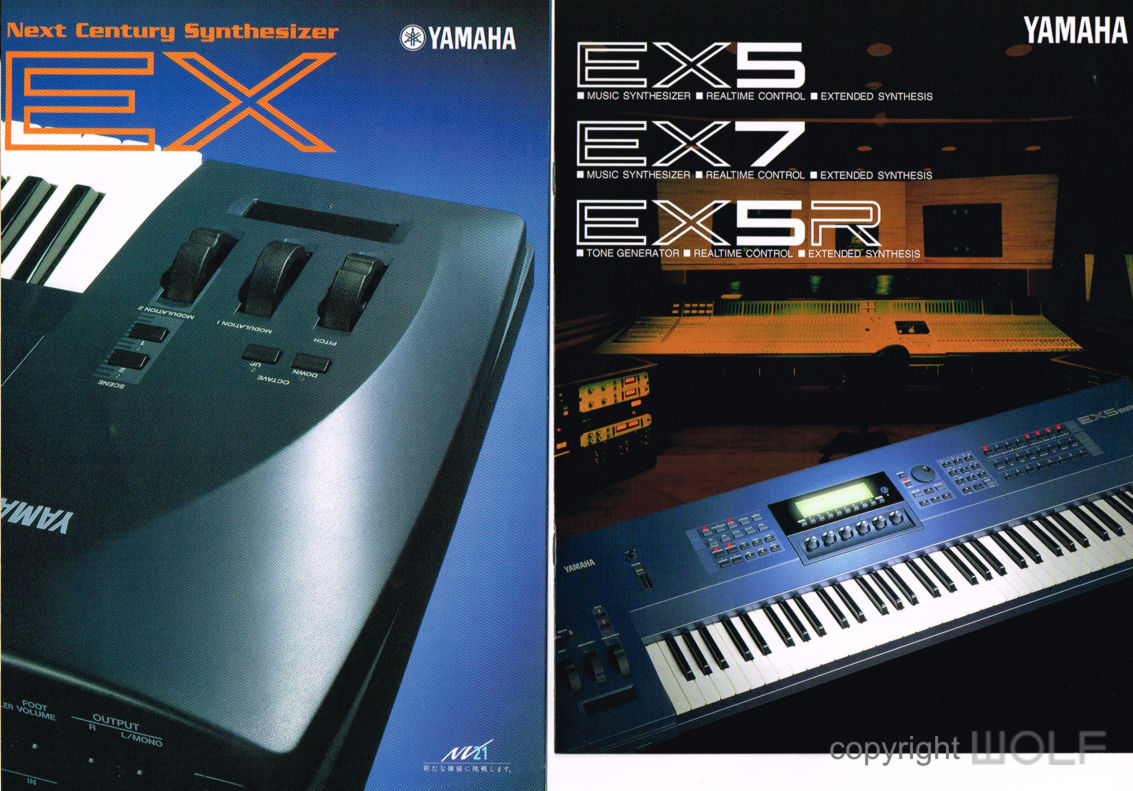
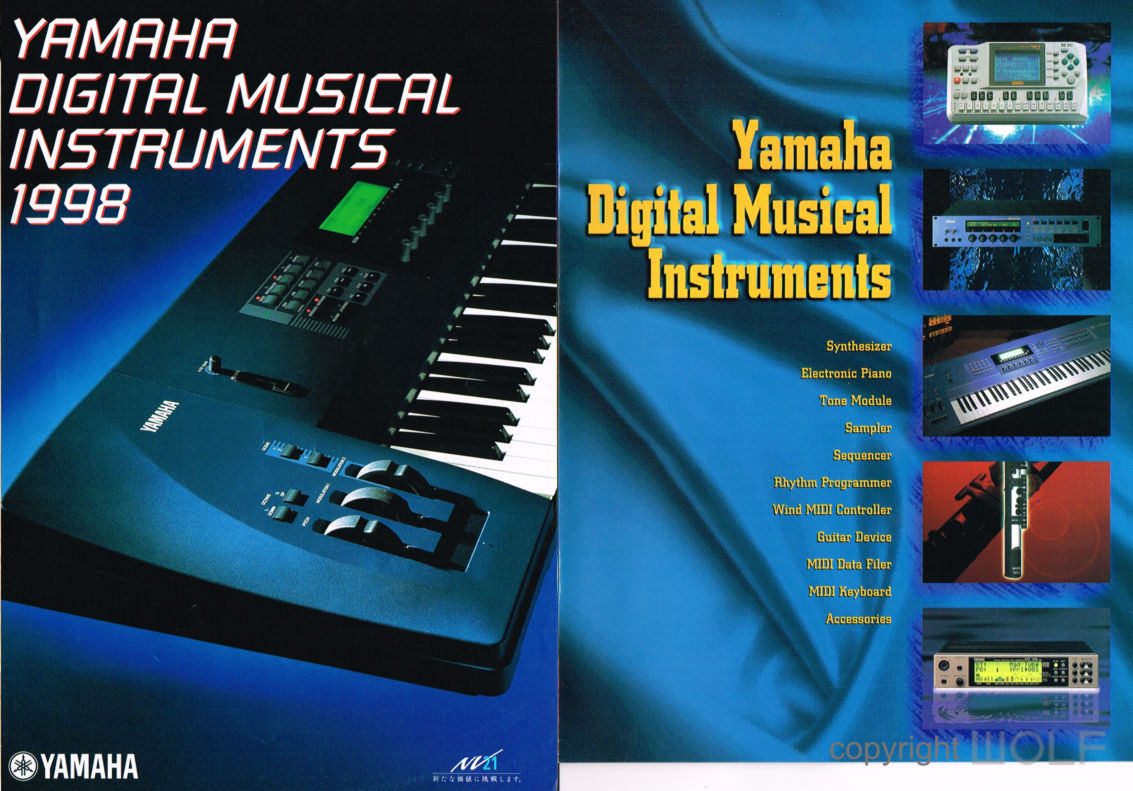
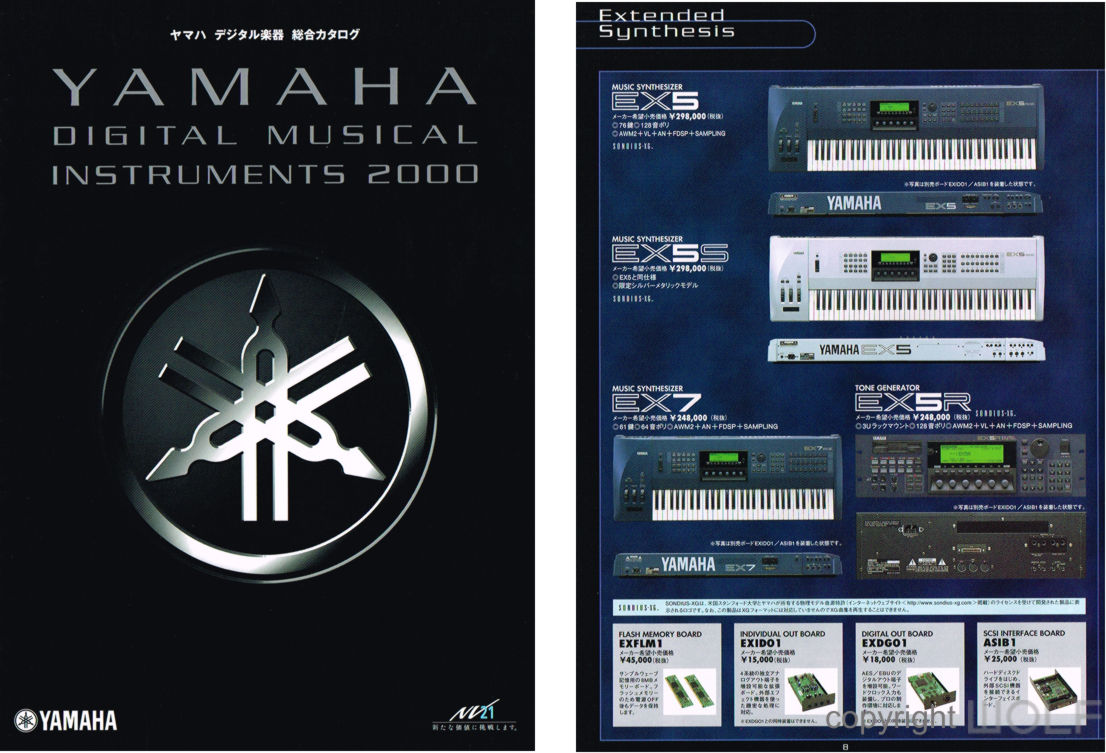
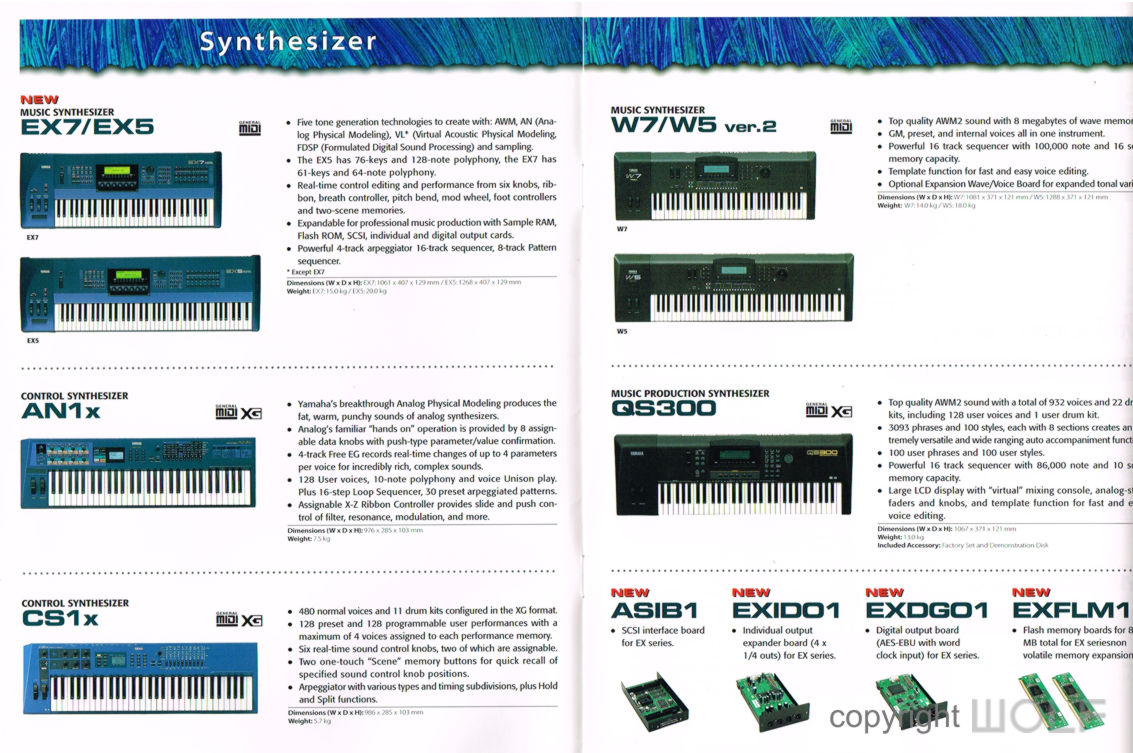
The factory brochures
WOLF DESIGN EXCELLENCE SCORE = 6.3
Disclaimer
The information in this review is intended for informational or educational purposes to provide readers an understanding of how something may be seen from a certain design perspective. In this case it is from the view point of WOLF DESIGNS. As design is subjective this review should only be considered as an independent opinion. Information further to being of an opinion is provided to the best of our knowledge based on our own research at the time of doing the review. We cannot be held responsible for any inaccuracies or inconsistencies and reserve the right to change or update any content as appropriate.
The final responsibility of the design resides with the original manufacturer.
